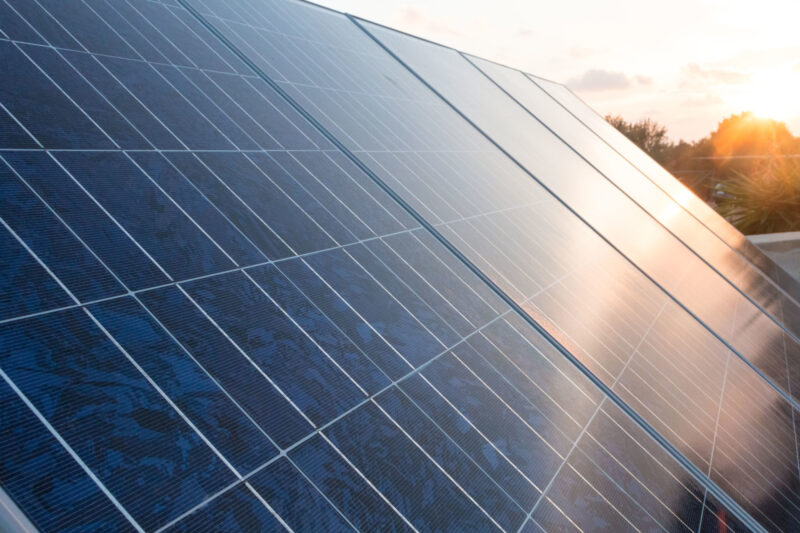There’s a reason why there are now enough solar panels to power 12.3 million American homes. Not only is this power source better for the environment, but it also saves you money on your monthly power bill.
Plus, the solar panels themselves are getting cheaper and cheaper every day. Still, despite the prevalence of this technology many people still don’t know exactly how this technology operates.
So, how do solar panels work? If you want to learn the answer to this question, then you’re in the right place. In this article, we’ll walk you through everything you need to know about solar panel operation. Let’s get started!
How Do Solar Panels Work? Look At the Photovoltaic Effect
Before we begin, it’s important to first go over some definitions. Notably, we need to understand exactly how the photovoltaic effect works. In short, this is the process of sunlight converting into electricity.
This process is done by using silicone and phosphorus material. Silicone likes to hang on to its electrons. As such, it doesn’t produce any sort of charge on its own. However, phosphorus comes with one extra electron.
Phosphorus has no problem giving away its electrons which makes room for more electrons to be put into motion through sunlight energy. This is thanks to positively charged boron atoms present in the layer of silicone.
Every boron atom is technically missing an electron. So, when an electric field is created from the positive and negative sheets, the electrons hop from material to material creating an electric current.
Step One: The Panels Are Activated By Sunlight
The first step is the solar panels being activated by sunlight. Solar panels are made of silicon cells that absorb the sunlight. To maximize their reach solar panels are typically placed on the roofs of residential and commercial buildings.
From there, the photovoltaic cells absorb the sunlight during hours of daylight.
Step Two: An Electric Current Is Produced By the Cells
There are two, thin layers of silicone in each panel that act as semiconductors during the absorption process. One of these silicone layers contains a positive charge, while the other one contains a negative charge.
This results in a small electric field forming around the cell. As such, when the energy from sunlight hits the solar panel it causes the electrons to come loose within the semiconductor. This in turn causes the semiconductor to produce an electric current.
Step Three: A Solar Inverter Converts the Electricity
Now that we have an electric current everything is all set to power your home, right? Sadly this isn’t the case. The electric current produced by the panel is what’s known as direct current electricity (or DC electricity).
Unfortunately, this isn’t the type of current that’s needed to power most modern homes. Instead, you will need what’s known as alternating current electricity (or AC electricity).
The good news is that you can easily convert DC electricity into AC electricity using a simple solar inverter. For your system, you can either choose one inverter for all your panels, or smaller ones for each panel.
Step Four: The Converted Electricity Can Now Power Your Home or Generator
Once your energy current has been converted it’s ready for use in powering your home. The good news is that this works the same way as when you go through a traditional electric company.
The electricity runs through your electric panel to be properly distributed amongst the lights and appliances. So, you don’t need to change anything.
You should also stay hooked up to the power company in case there are any overcast days where you need to supplement your solar power with traditional power.
Step Five: Your Electricity Usage Is Measured On a Net Meter
As we mentioned before, there might be overcast days where you need to supplement your solar power with power from the electric company. The same goes for nighttime when your solar panels aren’t collecting energy.
However, the converse is true too. If no one is home during the day, then your home is collecting solar energy that isn’t being used. The good news is that this energy isn’t being wasted.
Electricity from the power company flows in both directions. As such, if you have a surplus of energy that you aren’t using, then the power company can redistribute it to households that do require it.
Your meter, which is typically responsible for measuring the amount of electricity you use, can work the other way too. It measures how much power you send back to the grid and then awards you with energy credits that you can use. This is how many people save money on their energy bills over the months.
How Do You Install Solar Panels
As you can see, the process does get a little complicated. That’s why it’s important to find an installer that you can trust. Ultimately, installing solar panels on your own is likely to fail.
There are simply too many moving parts that are unrelated to the panels themselves. It can also be dangerous, especially when you’re installing on the roof, or dealing with potentially hazardous electrical grids.
As such, you’re better off going with a professional that knows what they’re doing. The good news is that many suppliers of solar panels also offer installation. One great option if you live in California is Simply Solar (https://simplysolarcalifornia.com/).
Want More Content? Keep Reading
We hope this article helped you answer the question, How do solar panels work? While the technology behind solar is a little complicated, the benefits aren’t. This technology comes with clear environmental and economic advantages.
So, what are you waiting for? Begin the solar installation process for your home today. Did you enjoy this article? If the answer is yes, then you’re in the right place. Keep exploring to find more topics that you’re sure to love.






